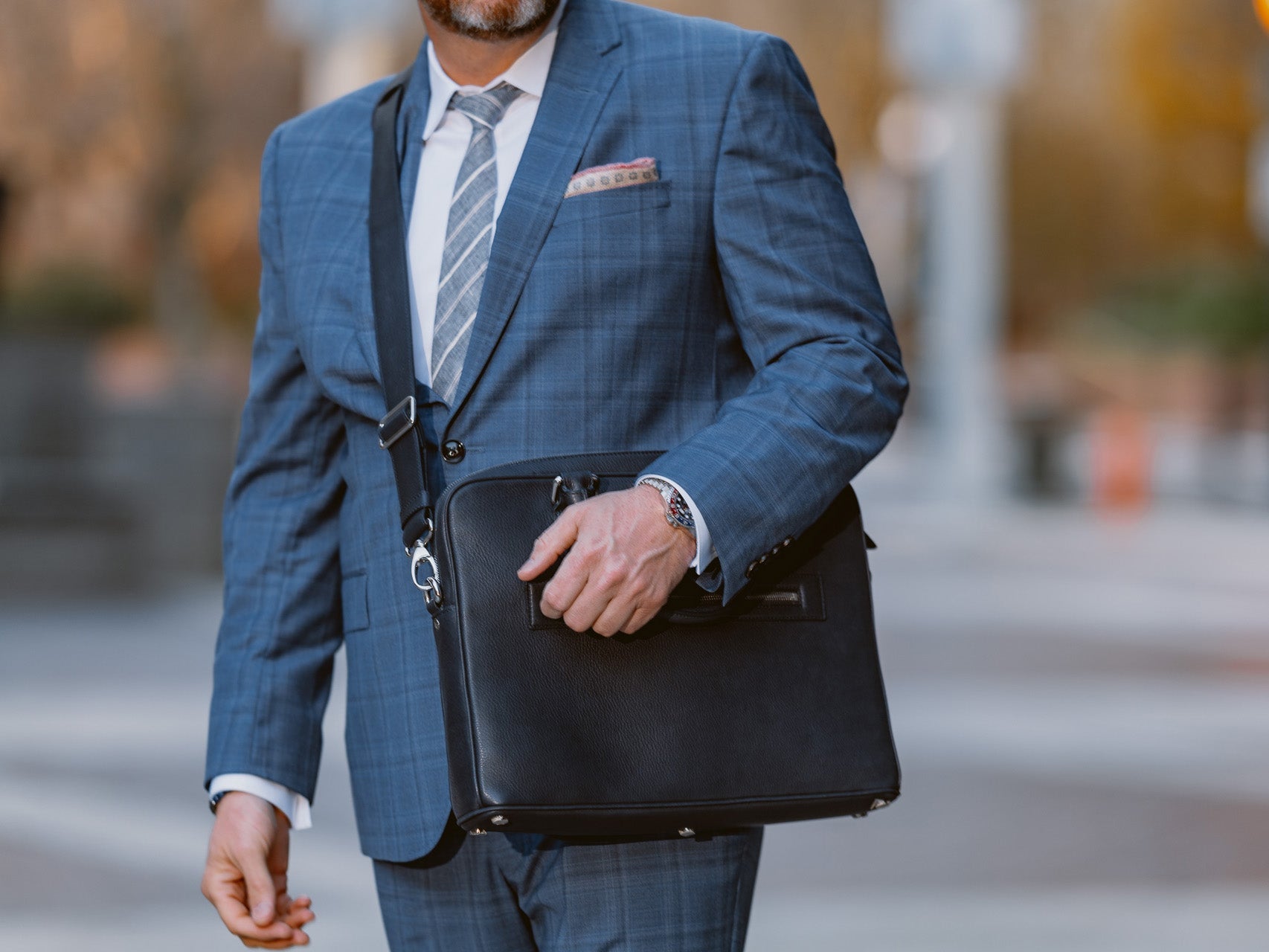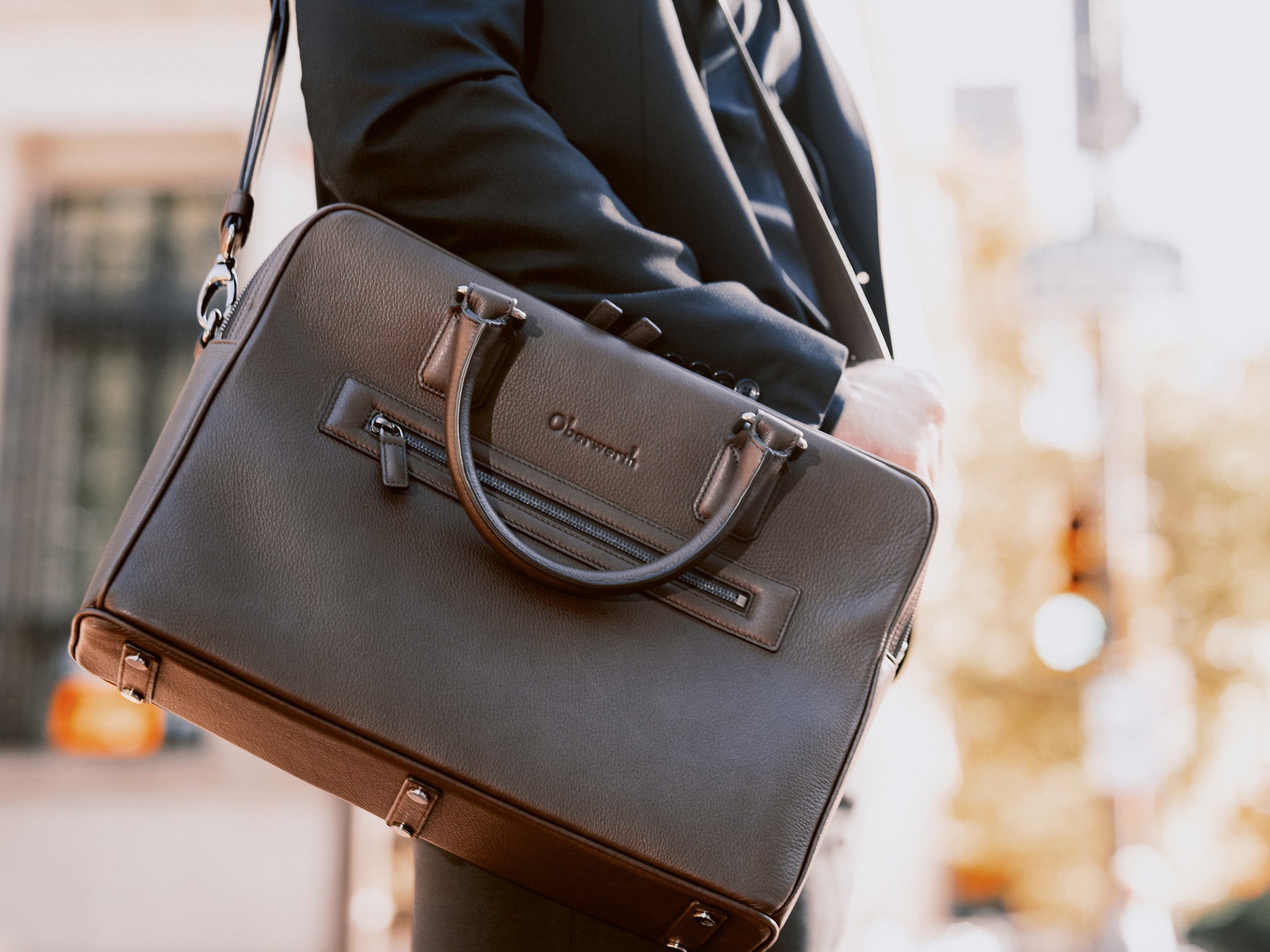
Global style guide: Confident appearance in different business cultures
In a smart-casual style with a suit, shirt without a tie, polo shirt or T-shirt, you rarely go wrong at business meetings or social events in this country these days. On the international stage, however, the business or cultural dress code is often somewhat different. It shows professionalism and respect for the people there to take these particularities into account when putting together international business attire for meetings around the globe. Such fashion diplomacy is part of good manners and style.
A series of dress codes and the decisive split second
"Clothes make the man": this is not just a catchphrase or the title of a novella by the poet Gottfried Keller, but is now scientific fact. According to a study by the renowned Princeton University, it takes an average of just 0.1 seconds for people to assess the person they are meeting for the first time. Over 80 percent of the test subjects considered the other person to be more capable and competent in elegant, high-quality clothing than in a casual or ordinary outfit. In international encounters, cultural dress codes also play a role in an initial judgment. And this often determines further relationships. The reasons for this are a number of psychological effects. The first is the primacy effect, in which the first impression dominates further perception. Then there is the halo effect - actually an error of judgment - in which people infer unknown characteristics from known characteristics. Example: People who wear glasses are often subconsciously considered to be more intelligent than people without glasses. After all, there is often a recency effect later on and a different subsequent impression shapes the determining assessment. However, you should avoid this effect in business life and for an optimal appearance, it is better to put appropriate international business clothing in matching, stylish luggage.
You will find the right bag for your business trip in our Oberwerth Shop. Whether classic laptop bagstylish business backpack or a practical weekender / suitcase inserts. Handmade from the finest leather and high-quality fittings with a lifetime guarantee. Take a look at our store and find the bag that suits you best!
This is often very easy. This is because fixed dress codes have become established in many countries and regions:
- Casual: This code applies above all to private invitations such as a barbecue or a visit to a sporting event. Casual clothing is now the order of the day, but always stylish and not worn or too loose. Chinos or jeans, polo shirts or casual shirts, a pullover or casual jacket and sneakers always work well for these occasions.
- Smart casual: A jacket or suit is now a must. Chinos or jeans may again be suitable as pants. You can also leave your tie in your suitcase with a shirt.
- Come as you are: This is not a license to wear any kind of casual clothing! It simply means that you should not change your clothes straight after the office. At a meeting later on, you can usually loosen your tie or take off your jacket. However, wait until your hosts are free of the strict business look first.
- Business casual: The relaxed approach here is similar to the smart-casual style. However, the casual business style is often interpreted a little more formally. Jeans are therefore taboo, but a tie is still not an option.
- Business or business attire: this is the code for classic, international business attire. A two- or three-piece suit, ties, smart leather business shoes and matching socks are now mandatory. The colors should remain subtle from neck to toe. Only a tie or shirt may set small accents, but there should be no more than two patterns in the overall outfit.
- Informal: This is often the dress code for evening events. This dress code comes very close to business attire. You can never go wrong with a black or dark gray suit. At least for the entrance, a simple, rather dark, harmonious tie is also appropriate. This look is just as suitable for semi-formal invitations - during the day. After 6 p.m., a tuxedo is the right choice.
- Black tie: Now it's getting festive and a plain black tie is far from sufficient. For such occasions, please opt for a tuxedo, possibly a tuxedo vest and definitely a tuxedo shirt with a black bow tie.
The following generally applies, especially without information on the desired dress code: Always choose your outfit a little more formal than is probably expected. It is always better to appear a little overdressed than underdressed.
Cultural dress codes around the world
Even in Europe, international business attire can differ significantly. In the UK, for example, you will be well received if you are very conservative. Here, it may be a three-piece rather than a two-piece suit. A tie is a must there and a matching handkerchief completes the look perfectly. It is best to avoid ties with different colored stripes altogether. Otherwise, you may unconsciously identify yourself with certain clubs or universities in the UK, which could lead to misunderstandings.
In Switzerland, things are similarly formal. Here you impress with understated elegance and understatement. Dark suits, elegant, inconspicuous ties and understated colors or patterns on shirts are always appropriate. Like Germany, Switzerland has recently relaxed its approach to business outfits. Depending on the occasion and the other person, smart casual is now just as acceptable.
In southern Europe, on the other hand, international business attire differs more. The Spanish prefer a style whose conventions are somewhere between those in the UK and Switzerland. The situation is similar in Italy. In Greece, you can practice fashion diplomacy for yourself or your company in a very different way. You hardly need a tie there at all. Instead, the otherwise frowned upon short-sleeved shirt or a polo shirt is much more convincing.
A little further east, in the Arab world, you are more likely to be seen in business dress code. Avoid slim-fit suits. With their tight fit, they make you sweat quickly and become just as uncomfortable if you sit very close or on the floor during meetings, which is typical in the Arab world. It is also good manners here - as in Japan - to take off your shoes when entering some buildings or private homes. Old or even holey socks quickly become an embarrassment.
A little further east, in India, things are more relaxed when it comes to international business attire. A good pair of trousers and a shirt usually suffice there. Due to the heat and high humidity, Indians often do without a jacket or tie for business meetings. Your clothing here should contain a lot of cotton, which absorbs sweat well and is breathable. White, dark gray or black do not show sweat stains too clearly and look elegant on any occasion.
If a business trip takes you as far as China, business attire is the perfect way to show professional style, just like in the UK. Here, simple, sophisticated elegance in muted, inconspicuous colors for suits, shirts, ties, shoes and laptop bags is the ideal choice. In Eastern Europe or even in Russia, on the other hand, the look can be a lot more striking. Bright colors, striking patterns or accessories such as eye-catching luxury watches, which usually attract negative attention elsewhere, are seen here as an expression of influence, prestige and wealth.
In this part of the world, as in other countries or regions, one thing should never be forgotten: Don't dress up too much just to please! Cultural dress codes deserve respect, but at the end of the day, the best way to convince others - wherever they are - of your personality, your company or your offer is with authenticity and professional style.

